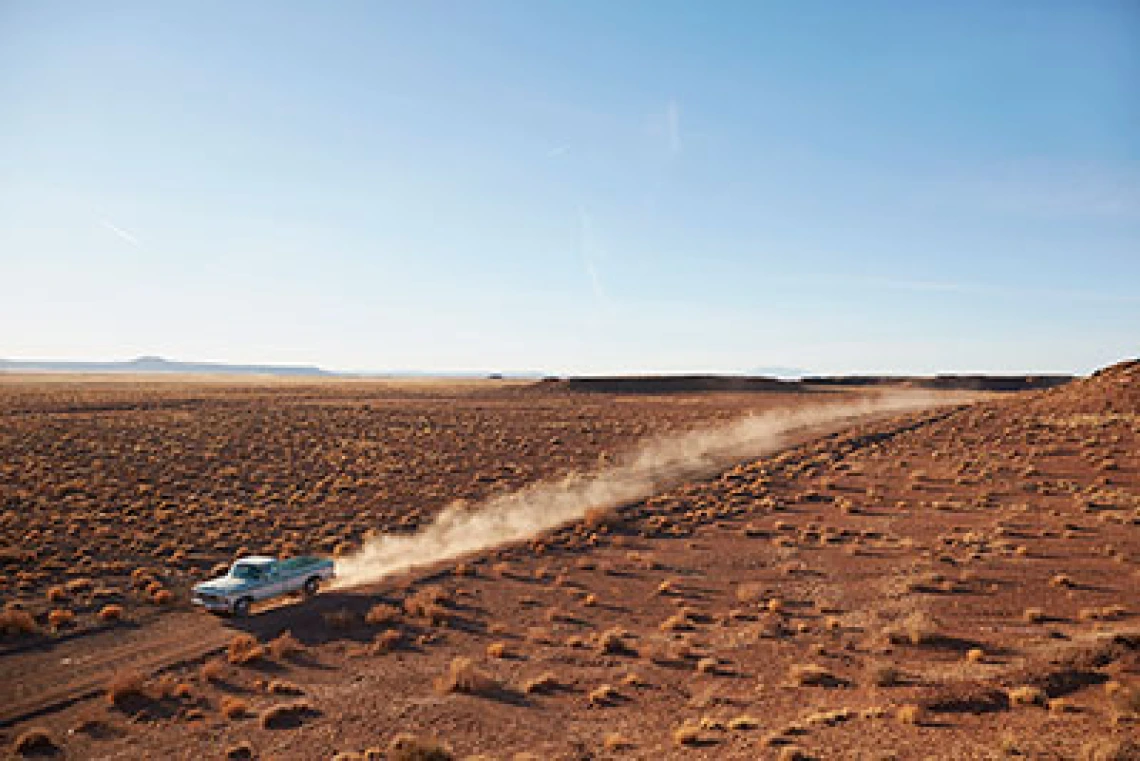Danger in the Dust: Valley Fever
Valley fever is one of the most common infections reported to the state of Arizona and the numbers are increasing — so much so that the area between Phoenix and Tucson is known as the “Valley fever corridor” and accounts for nearly two-thirds of all U.S.

In the desert soils of Arizona, California, Nevada, New Mexico, Texas and Utah a disease is living right under foot, and researchers at the University of Arizona are finding ways to fight it.

John Galgiani, MD, leads the Valley Fever Center for Excellence in finding better ways to identify and treat Valley fever, a rare infection endemic to the U.S. Southwest. (Photo credit: Kris Hanning Photo)
Coccidioidomycosis, or “cocci” for short, is the medical term for Valley fever, an infectious disease that affects thousands of people in Arizona every year. Valley fever is caused by a fungus called Coccidioides, which lives in the soil of areas that receive little rainfall, with hot summers and mild winters.
Valley fever is one of the most commonly reported infectious diseases in Arizona, and the number of people infected has been increasing in recent years. Most cases of Valley fever clear up without serious complications. However, Valley fever can be deadly. According to the Arizona Department of Health Services, 57 people in Arizona died from Valley fever in 2016.
Valley fever is not passed from person to person. Rather, people get Valley fever by breathing in fungal spores that travel through the air when the soil is disturbed. Although more than half of people exposed to spores never develop any signs of the disease, about 40% of them will get sick. Symptoms can range from weeks to months of debilitating symptoms, considered the “mild” form of the disease, to rare, much more severe illnesses in which the disease spreads to other parts of the body, sometimes causing life-threatening complications. And because symptoms mimic those of the flu — fatigue, cough, fever — doctors may mistake Valley fever for other conditions. The diagnosis becomes challenging when people travel away from affected areas to regions of the country where the disease is less prevalent and often less recognized.
“The impact on this population is similar to that of polio before we had a vaccine. It’s just that polio was a worldwide problem whereas Valley fever risk exists in a relatively small geographic area.”John Galgiani, MD, director of the UArizona Valley Fever Center for Excellence
“More than one-third of all cases of pneumonia in Arizona are actually Valley fever,” says John Galgiani, MD, an infectious disease physician and professor of medicine at the UArizona College of Medicine – Tucson. “One of the strongest tools we have to combat Valley fever is education, both to patients and to health-care providers.”
Dr. Galgiani is director of the UArizona Valley Fever Center for Excellence (VFCE), which is combating Valley fever in four ways:
- helping doctors and patients learn more about this disease
- developing faster, more efficient diagnostic tests to help physicians identify patients with Valley fever
- testing drugs that might cure Valley fever
- developing a vaccine that could prevent people from getting Valley fever in the first place
“There are more than 25 million people at risk of contracting Valley fever, and we do not yet have a vaccine to prevent it. The impact on this population is similar to that of polio before we had a vaccine,” Dr. Galgiani says. “It’s just that polio was a worldwide problem whereas Valley fever risk exists in a relatively small geographic area.”
Drug makers haven’t had a lot of enthusiasm for investing in Valley fever because there is a small, limited market for treatments and vaccines. But Valley fever is a significant public health issue, and a significant economic burden for the regions where the disease is common. Valley fever costs more than $500 million each year from expenses such as inpatient treatments, outpatient costs and lost work time for people who are sick, Dr. Galgiani says.

Lisa Shubitz, DVM, is hard at work finding a vaccine to protect both people and canines from Valley fever. (Photo credit: Kris Hanning Photo)
Valley fever also is estimated to cost Arizona dog owners at least $60 million annually. Dogs can catch Valley fever and are more likely than people to encounter the fungal spores. VFCE is working with regulatory agencies and veterinarians to bring a vaccine to market for canines. If the vaccine is effective in dogs, Dr. Galgiani hopes the transition to humans will be smoother.
Dr. Galgiani and his team are also looking at Valley fever at the genetic level, in collaboration with researchers from the UArizona Health Sciences Center for Applied Genetics and Genomic Medicine. Valley fever can affect different people in different ways. African-American and Filipino individuals are more vulnerable to the severe form of the disease, presumably, due to unidentified genetic variants they carry that influence susceptibility. Identifying the genetic differences that make some people more susceptible to severe Valley fever could help us understand more about this condition, and find new ways to fight it in the future.
Our Experts
Contact
Health Sciences
Office of Communications
520-626-7301
public@arizona.edu

